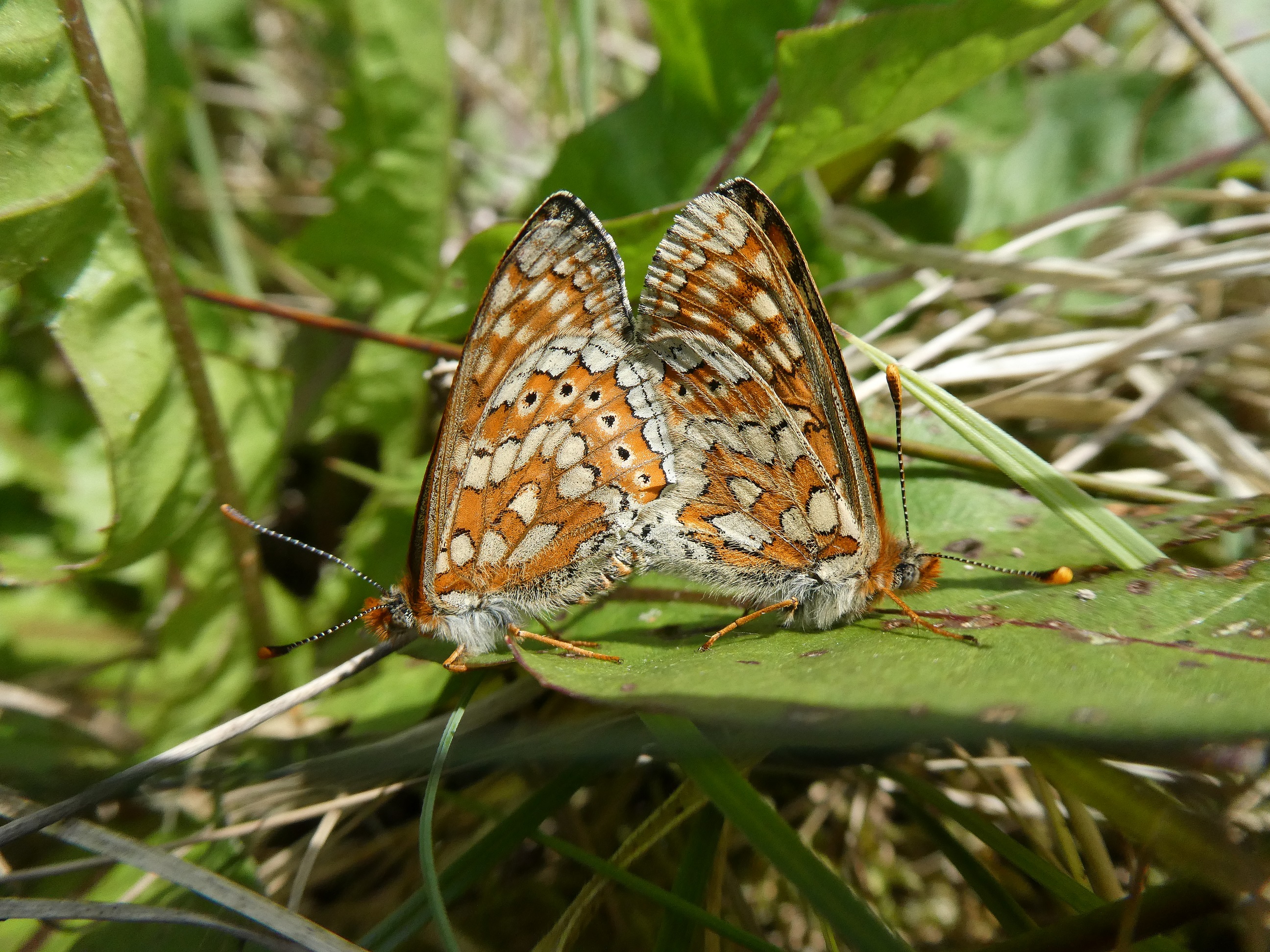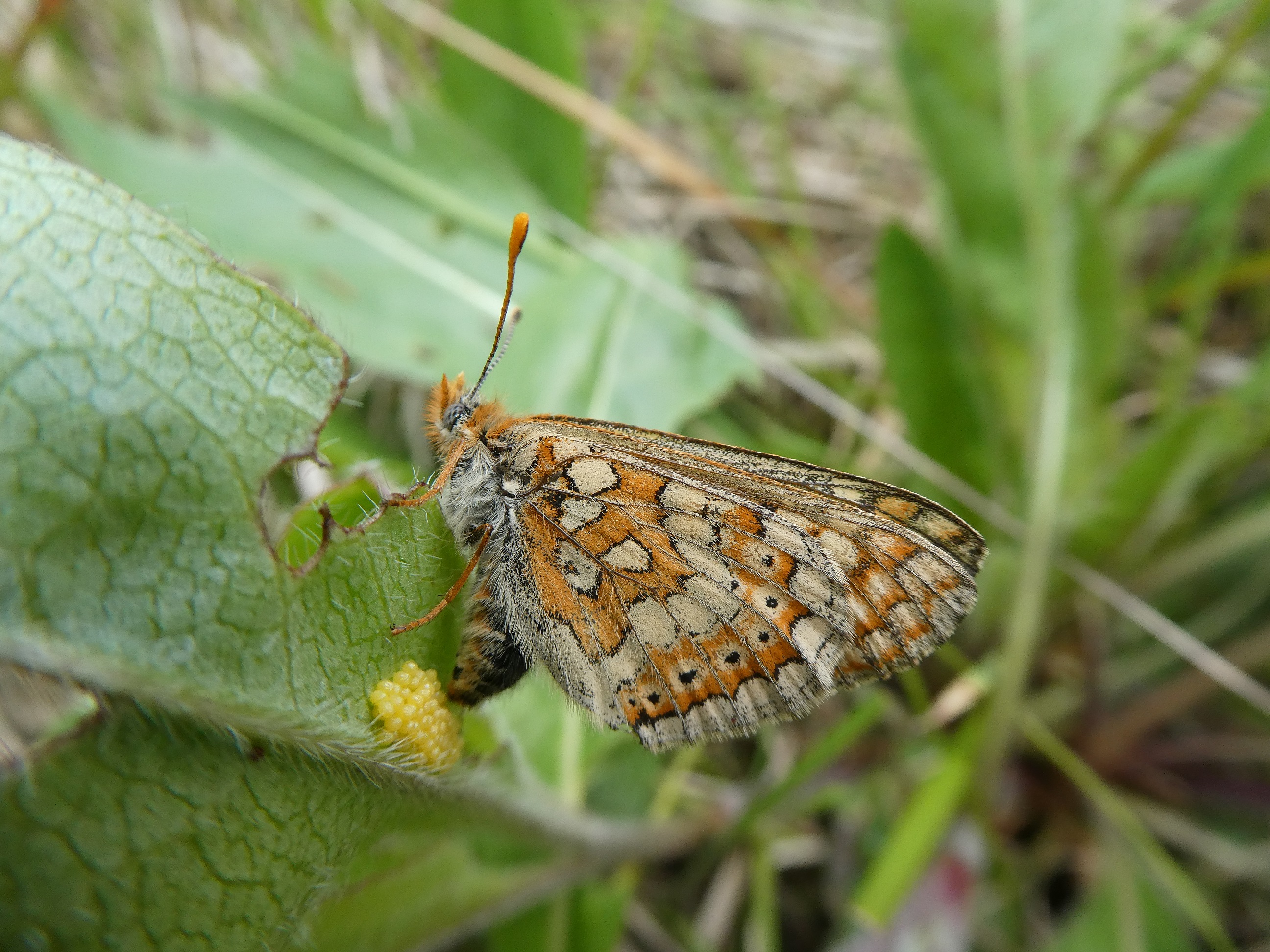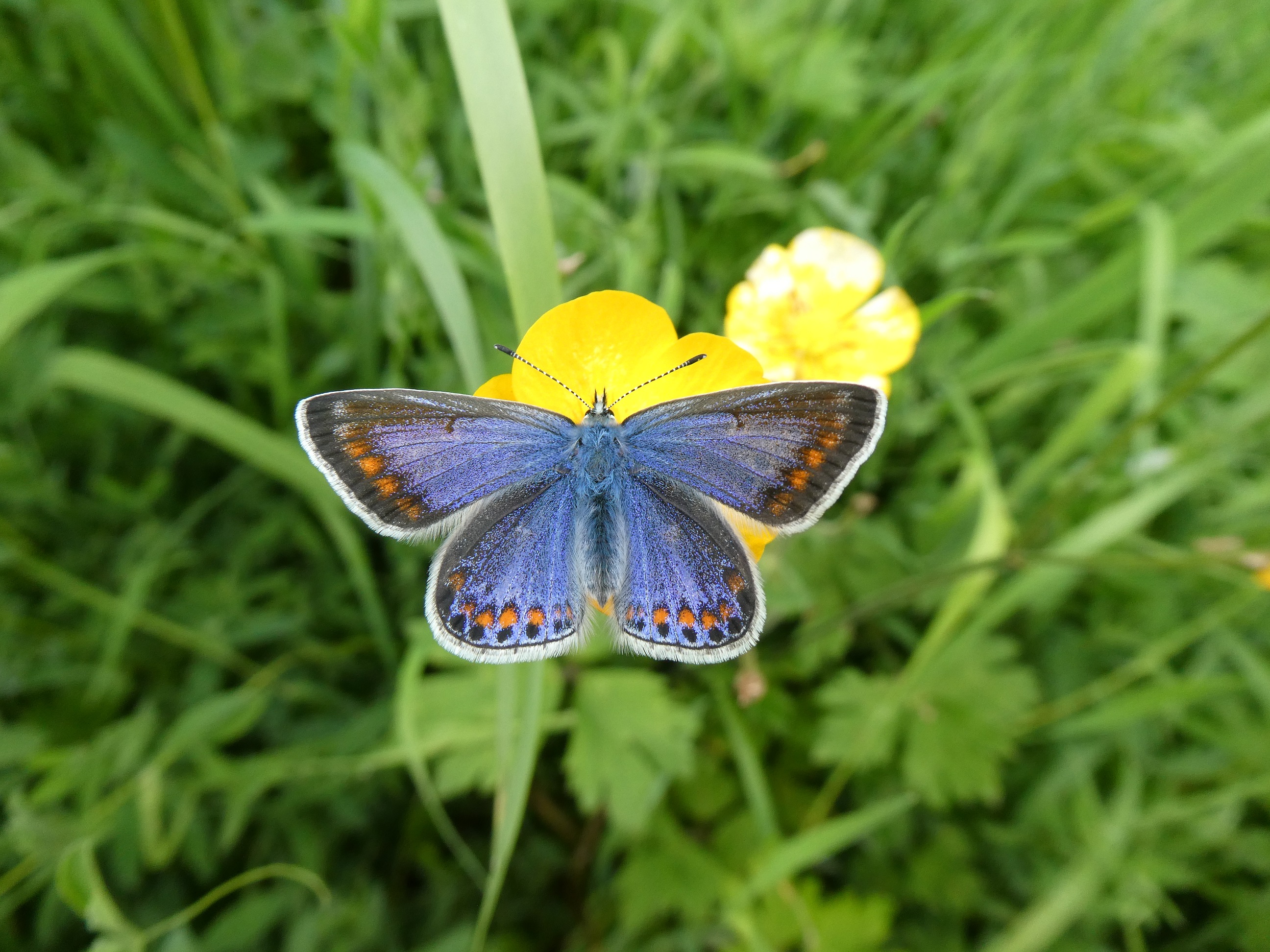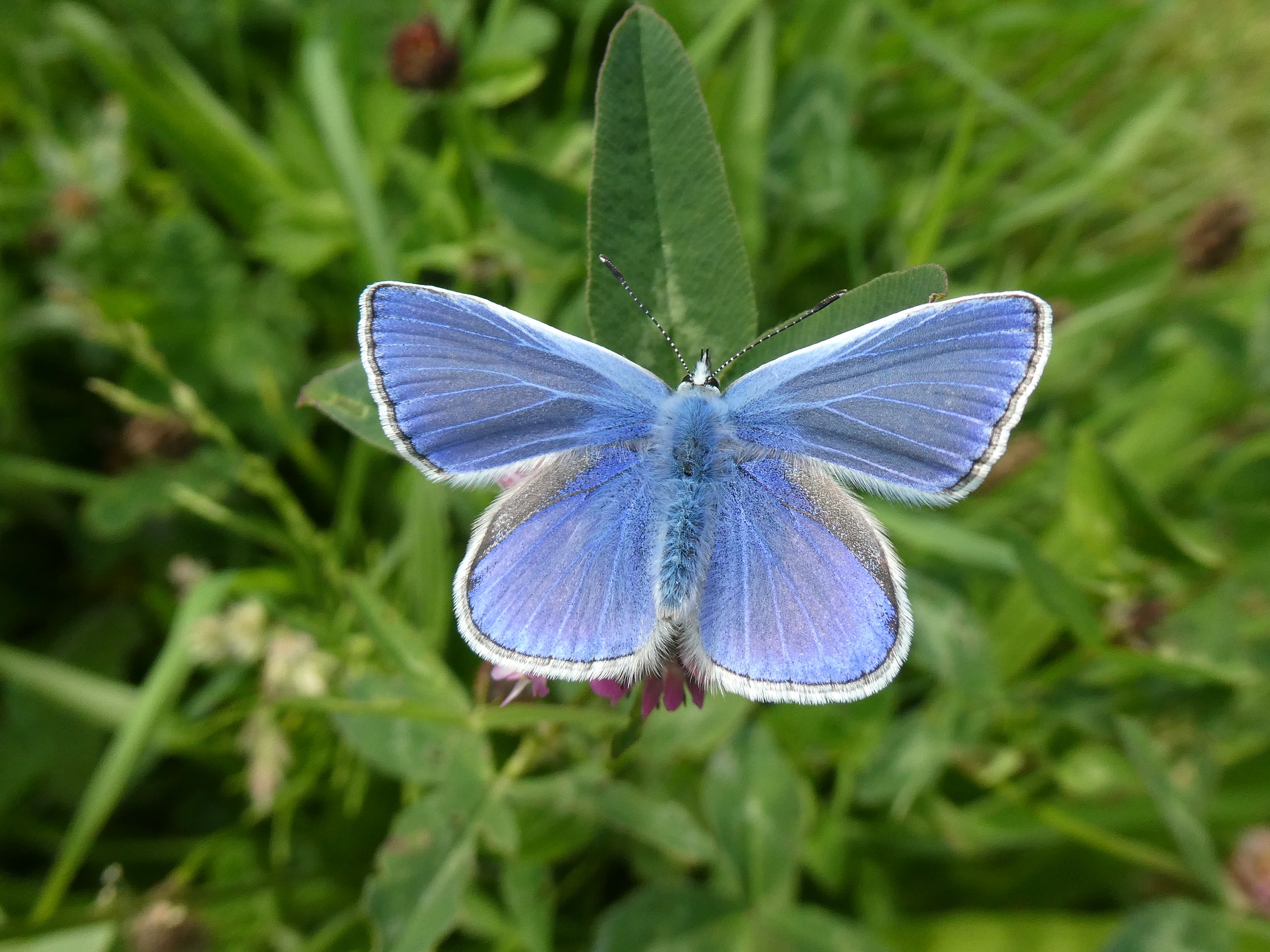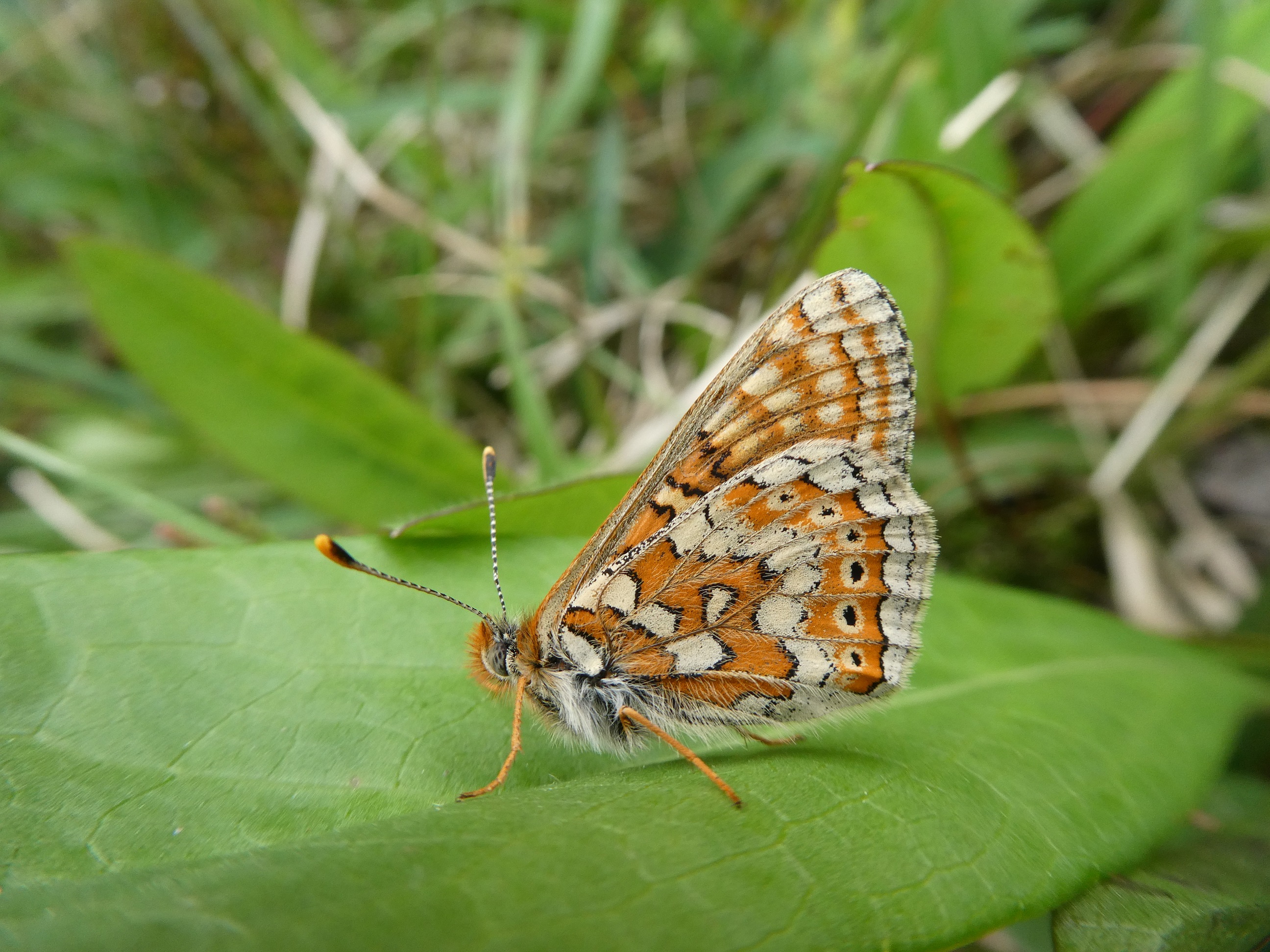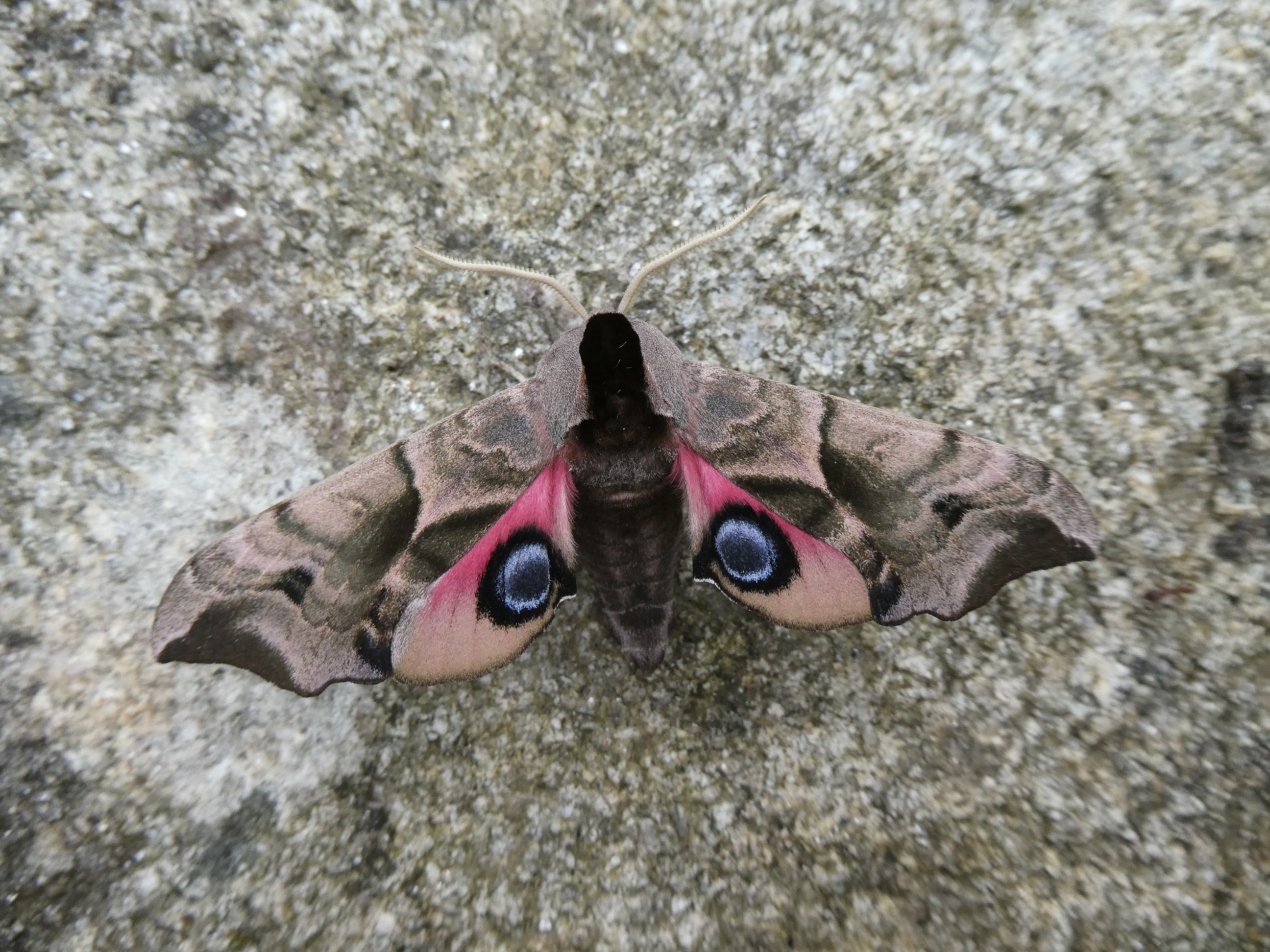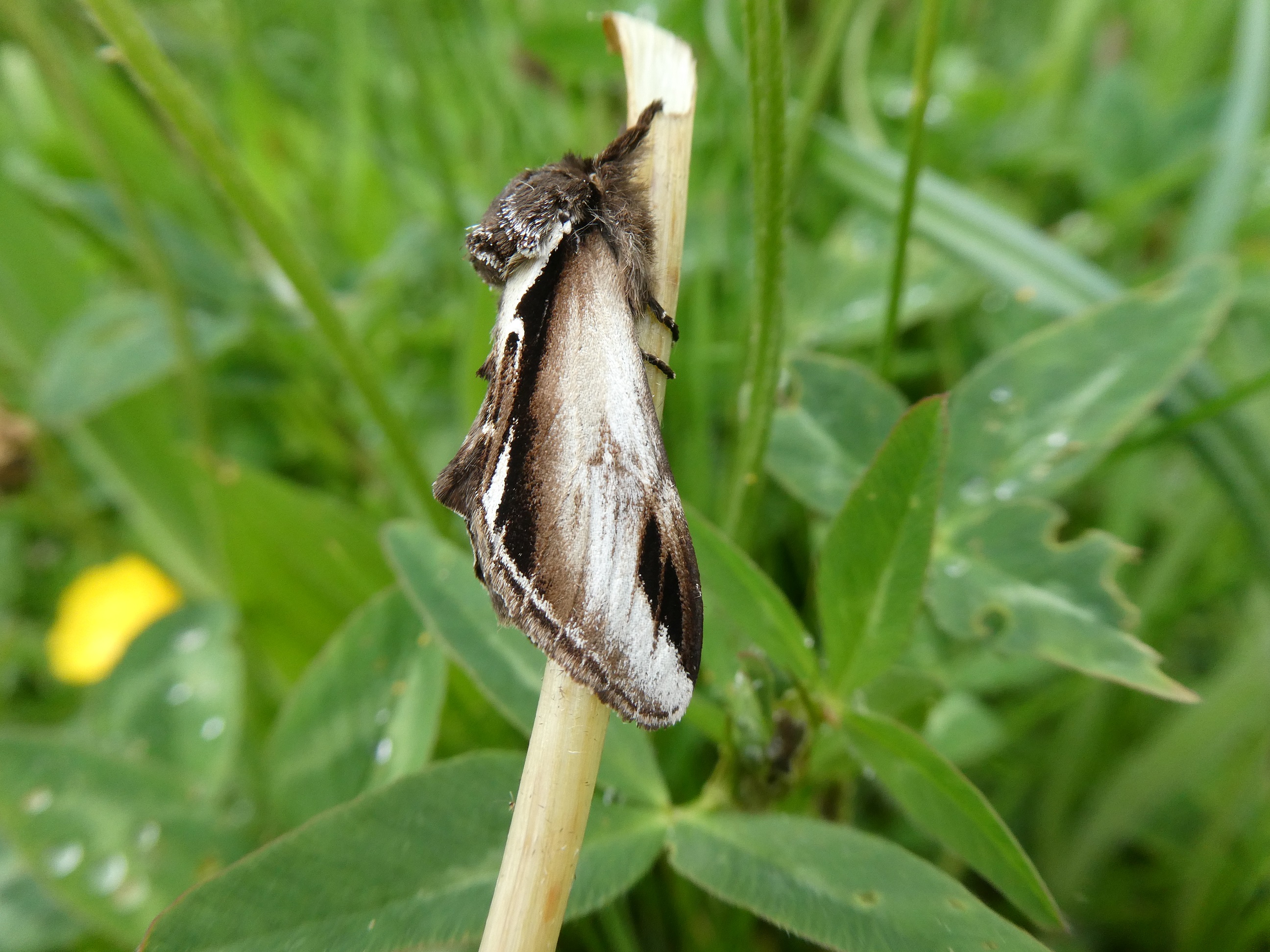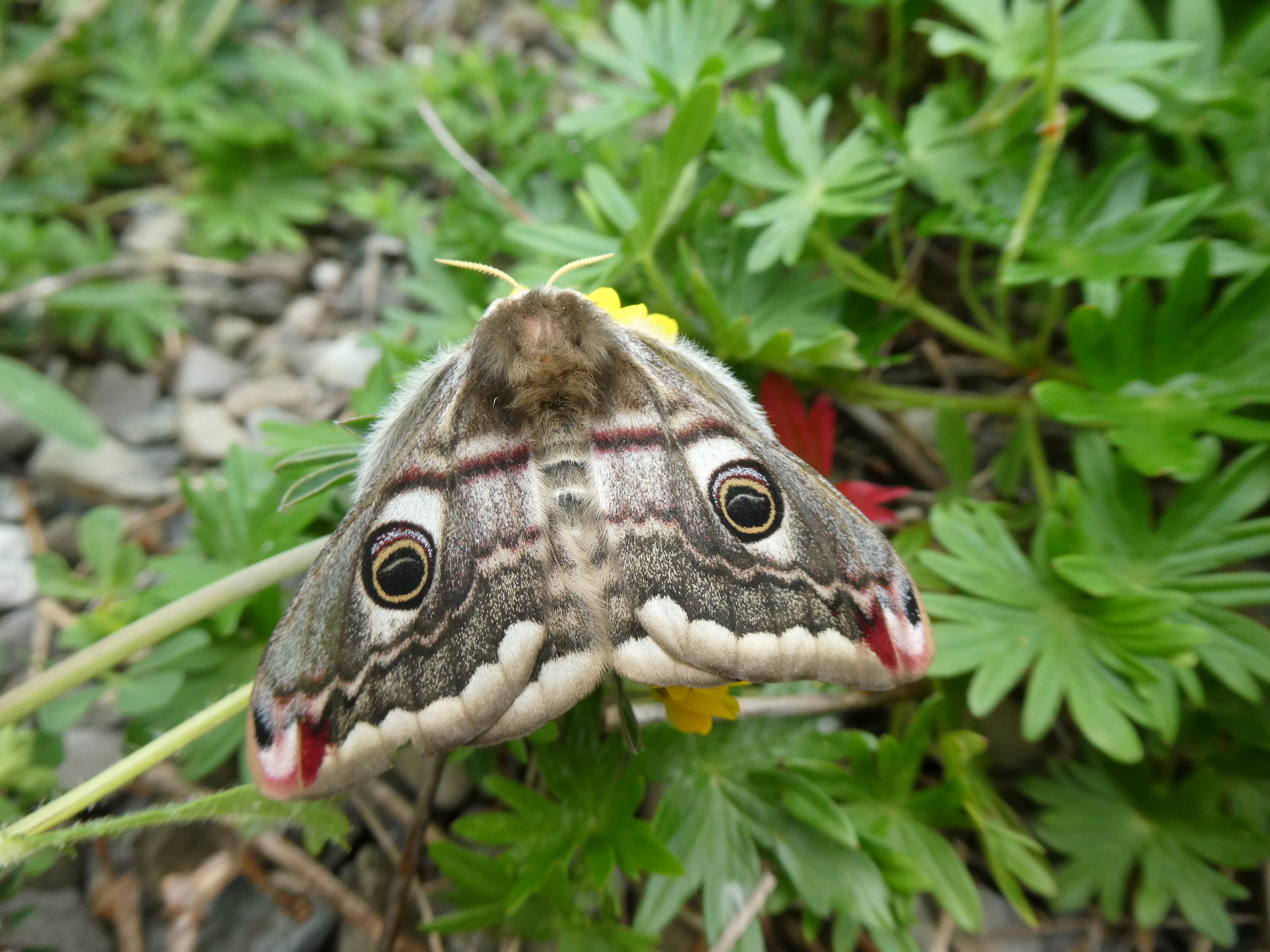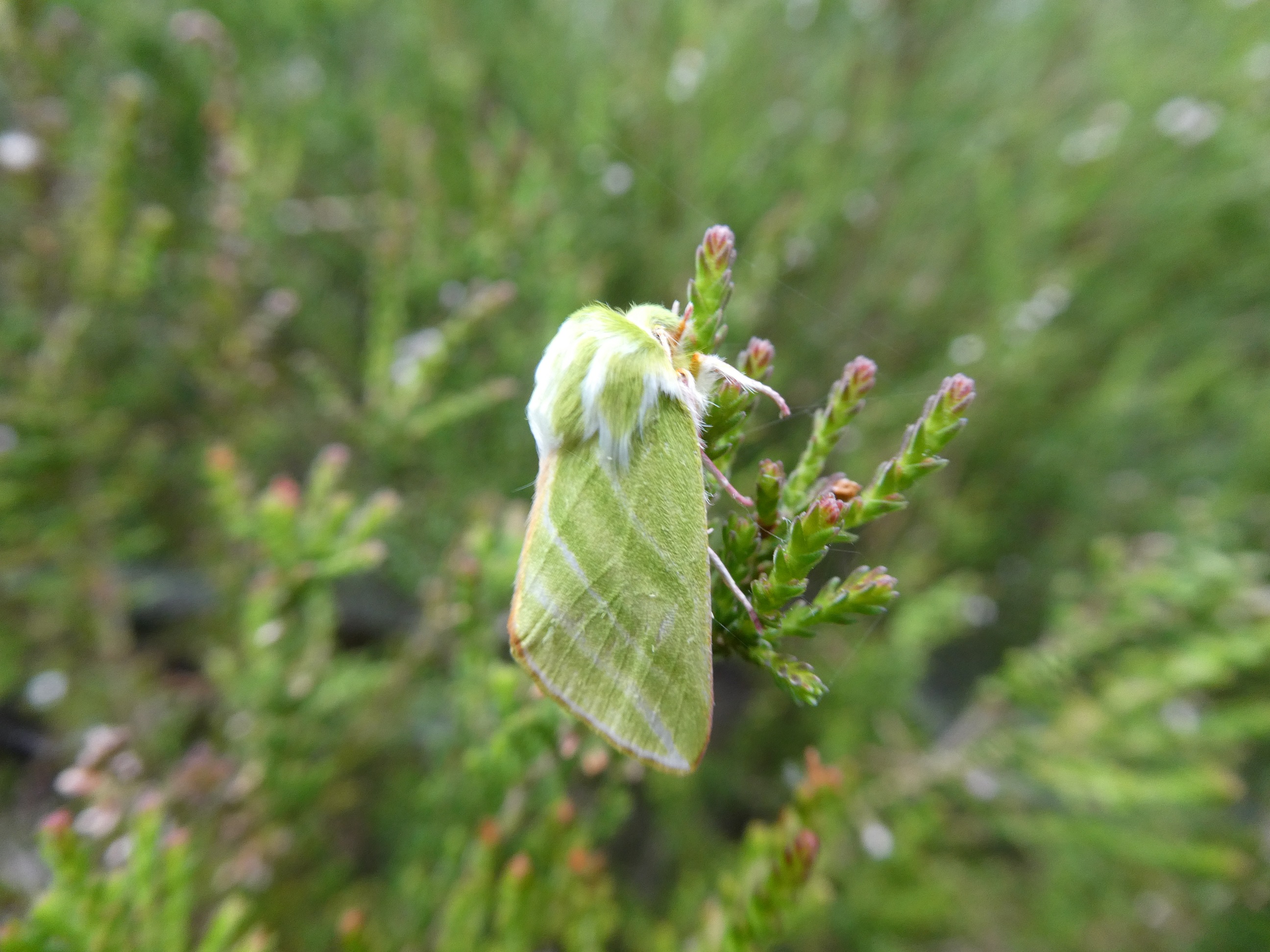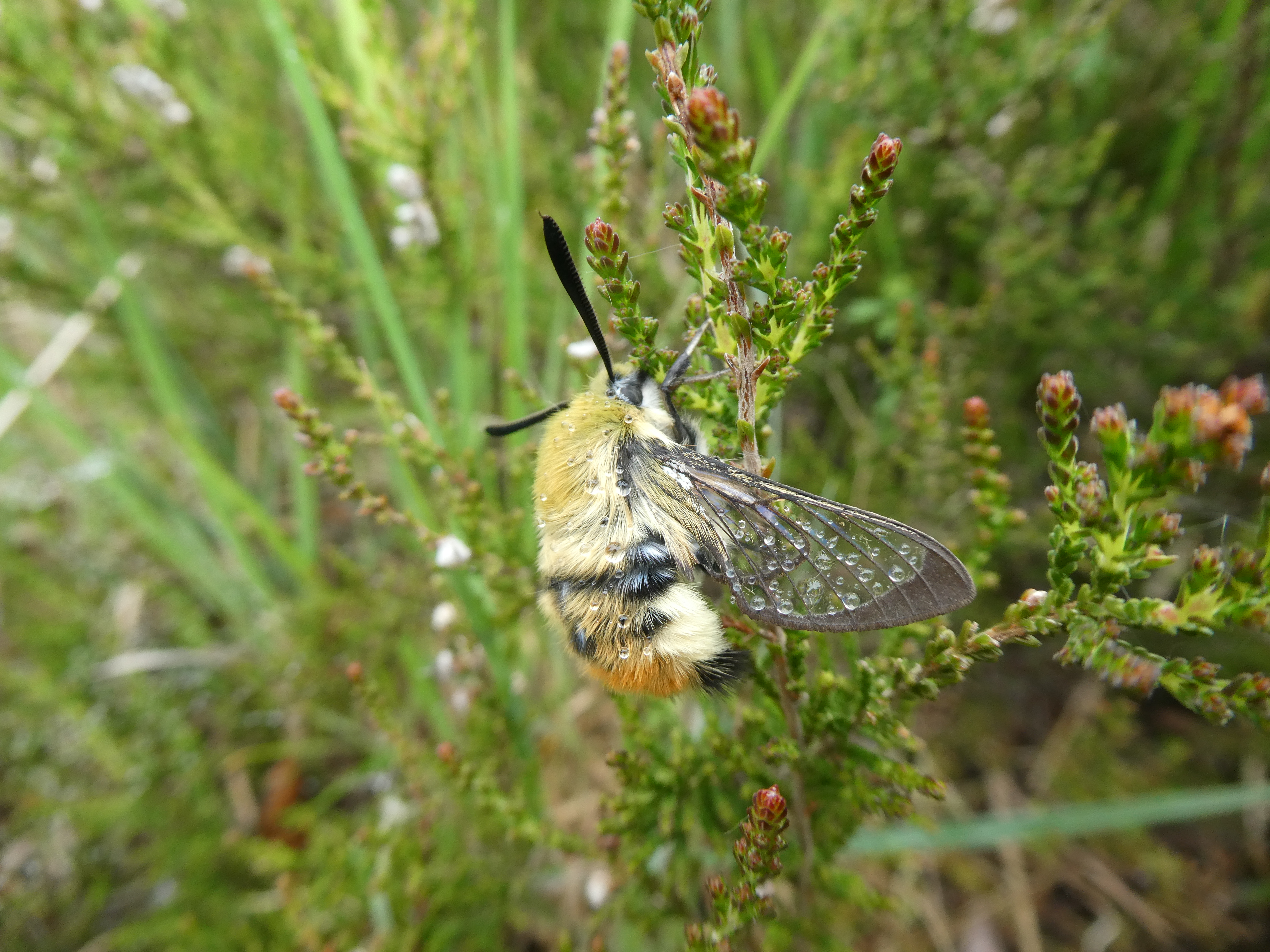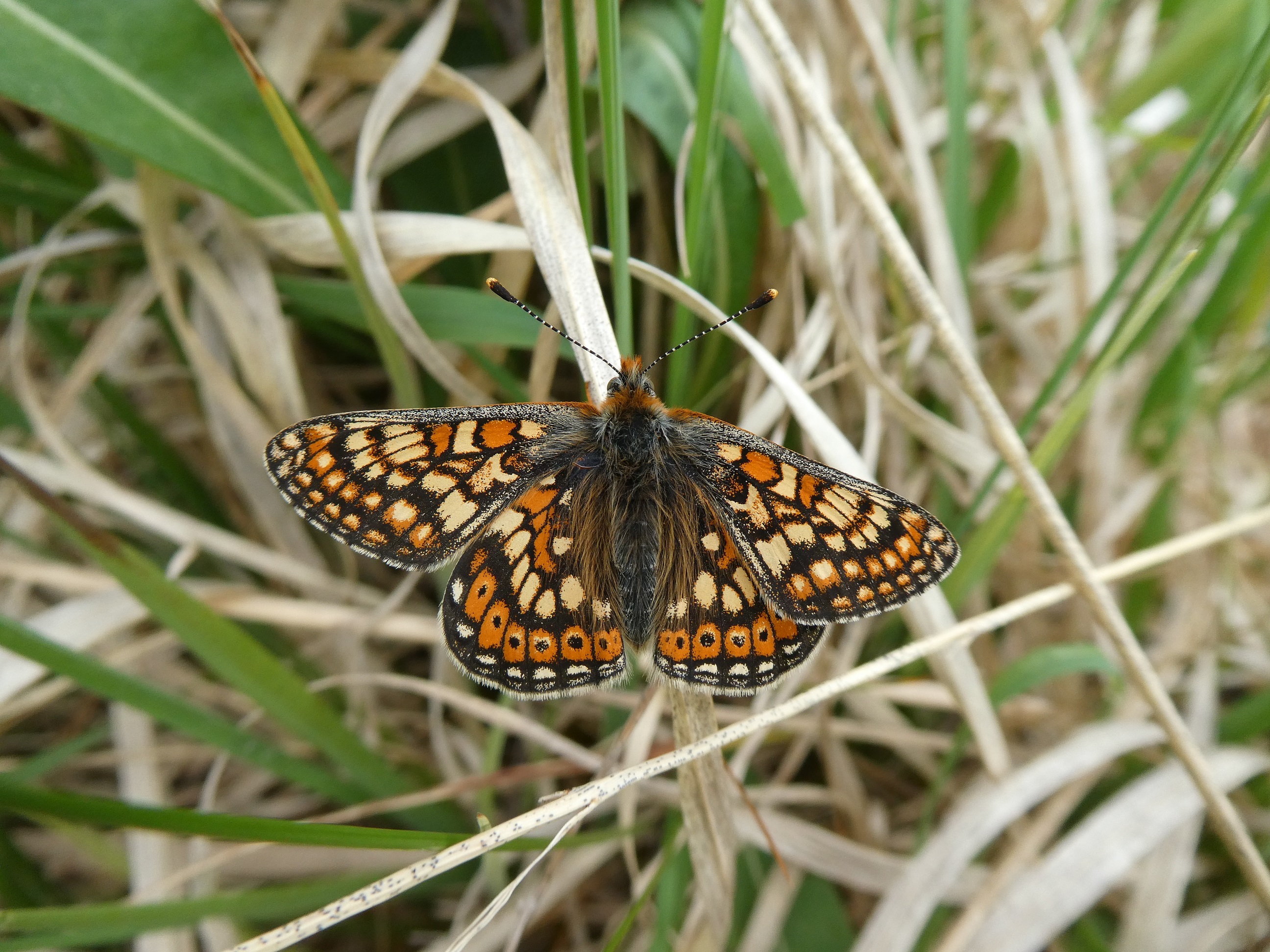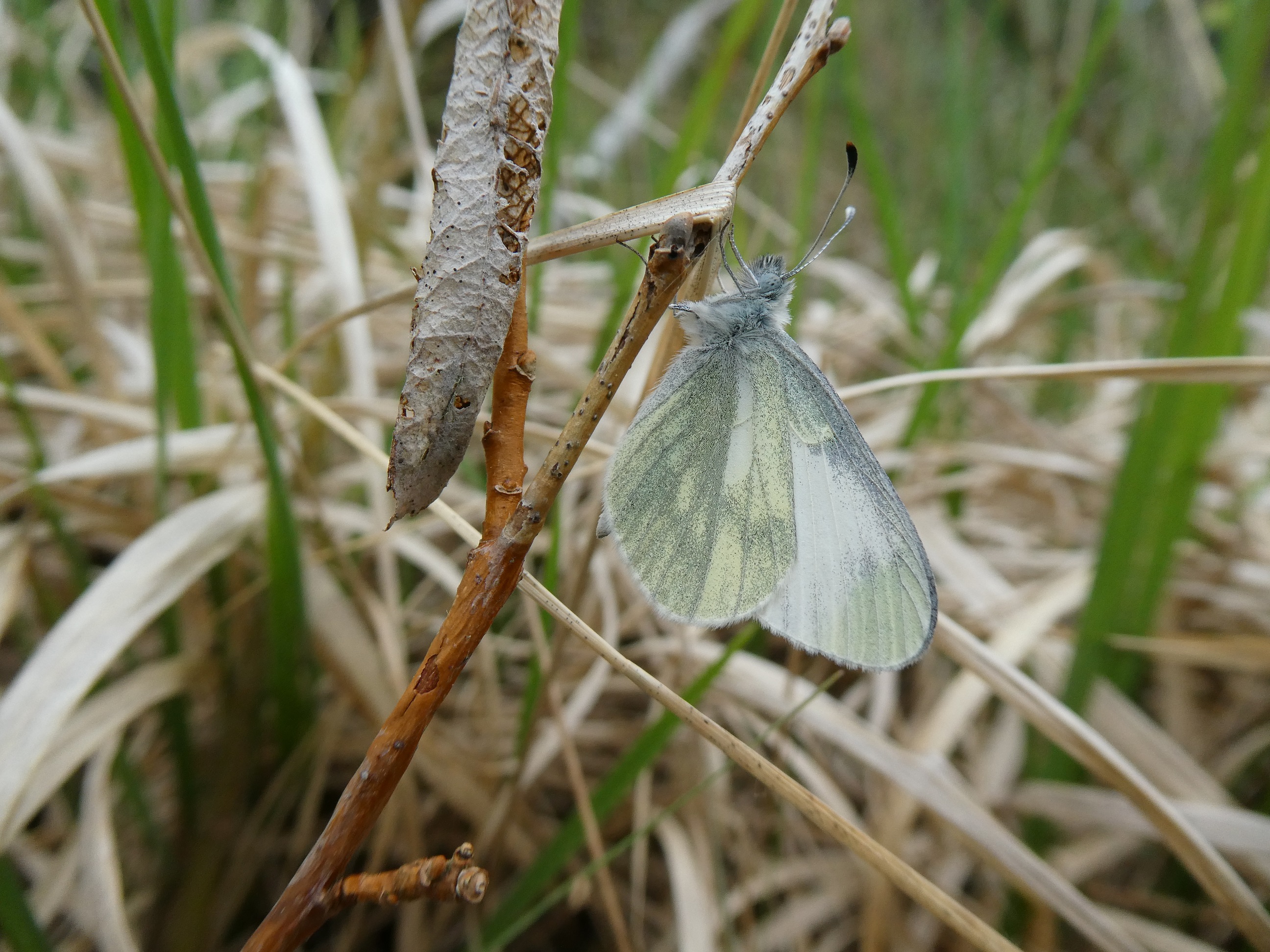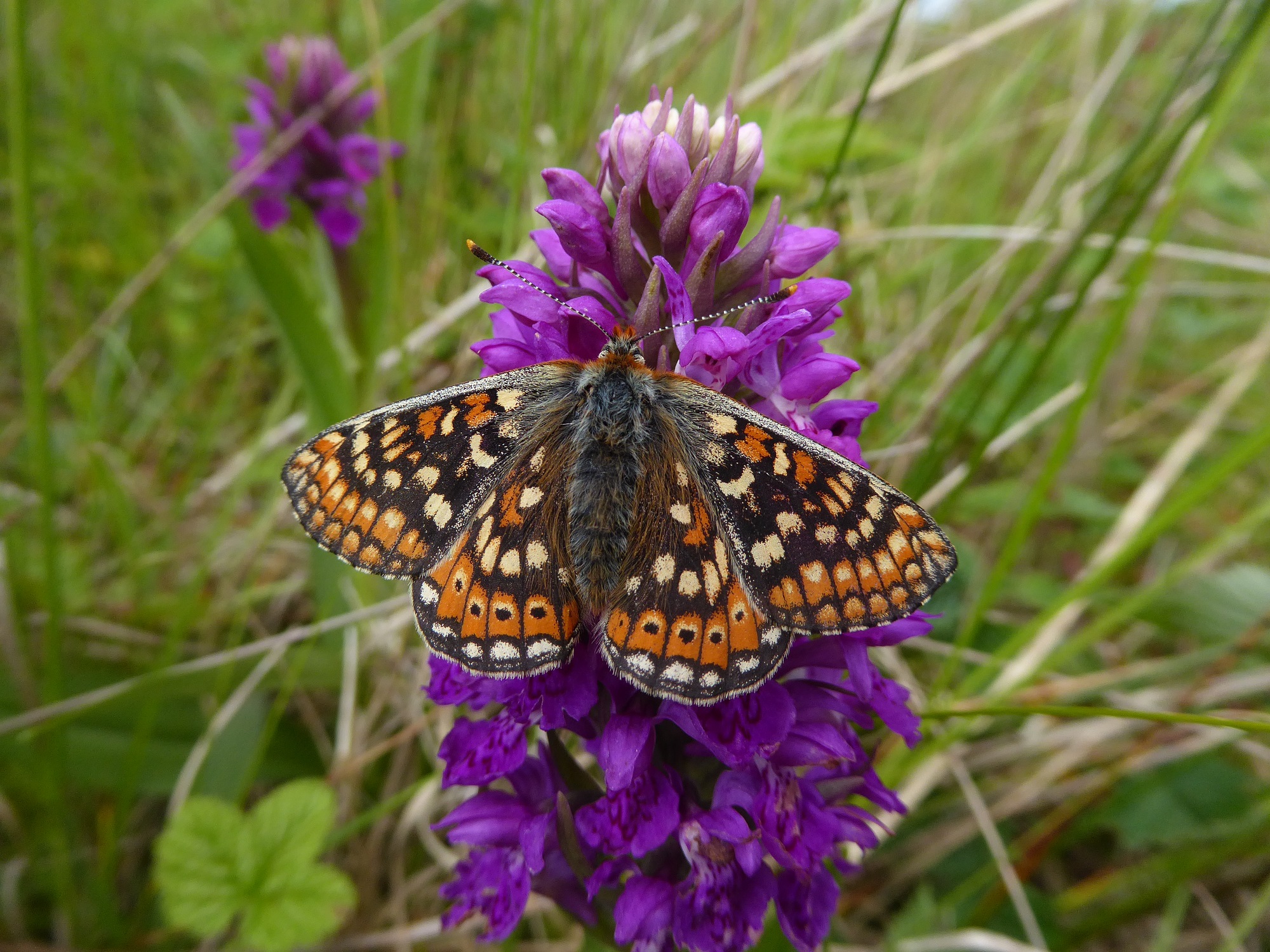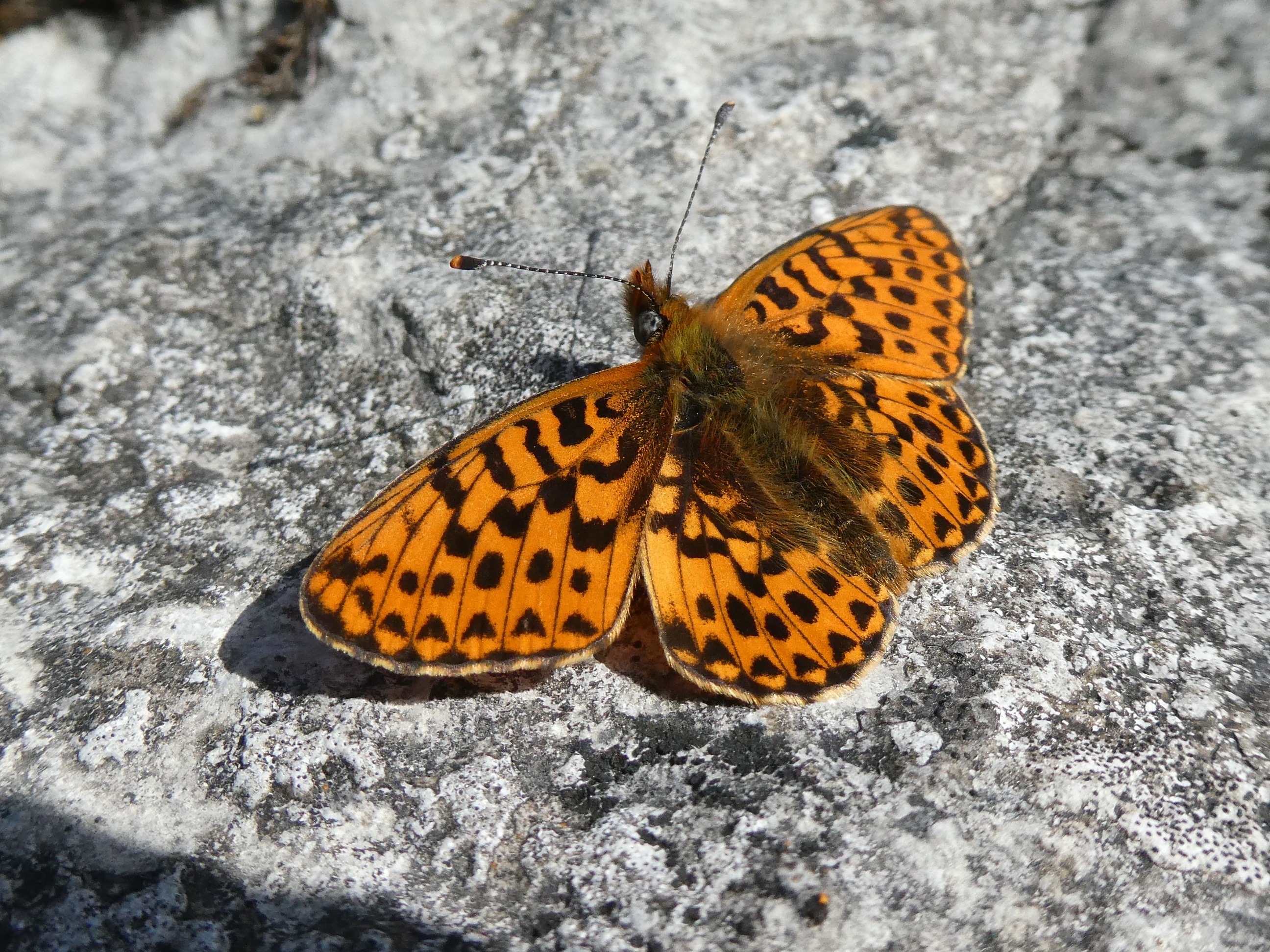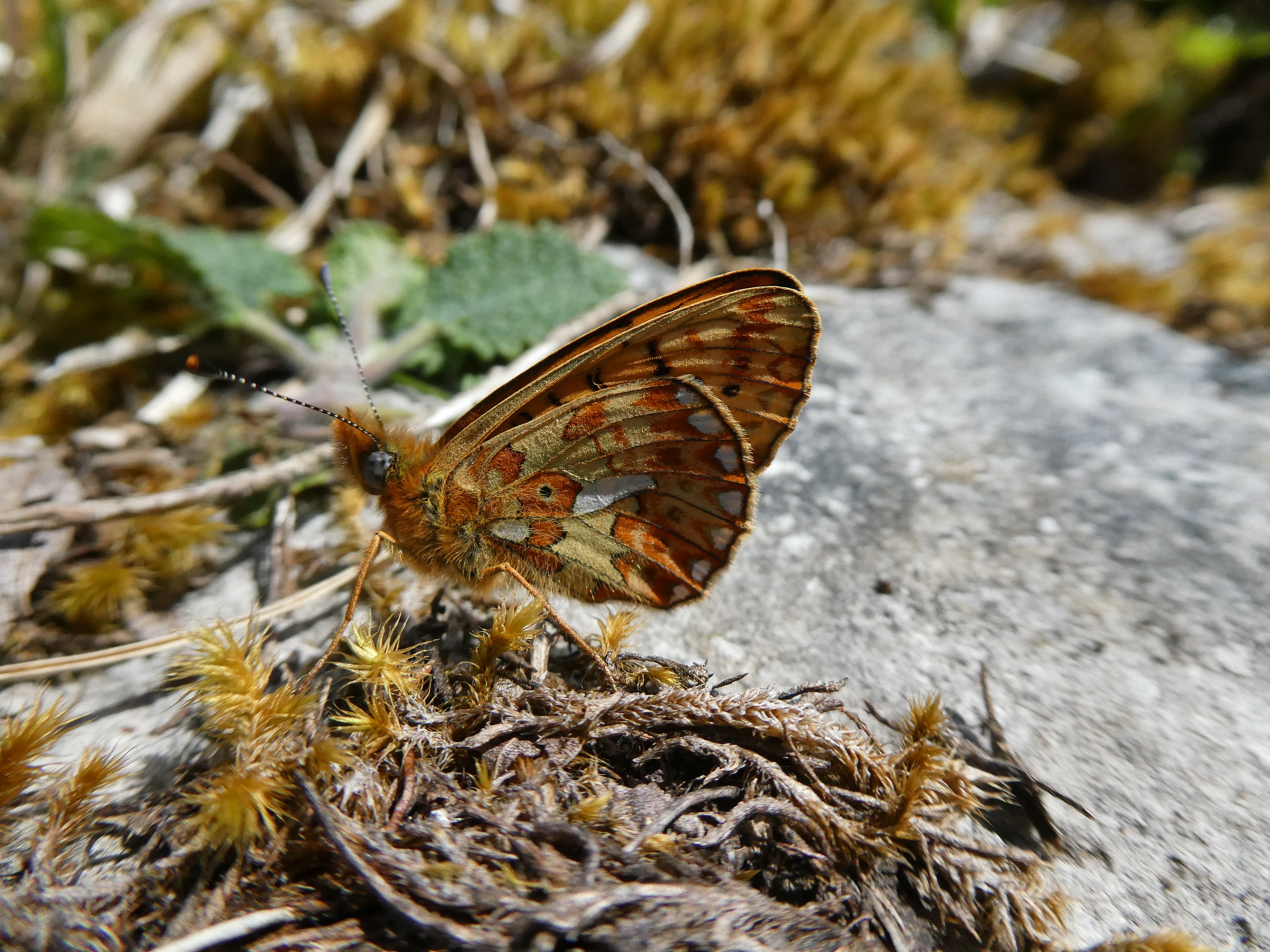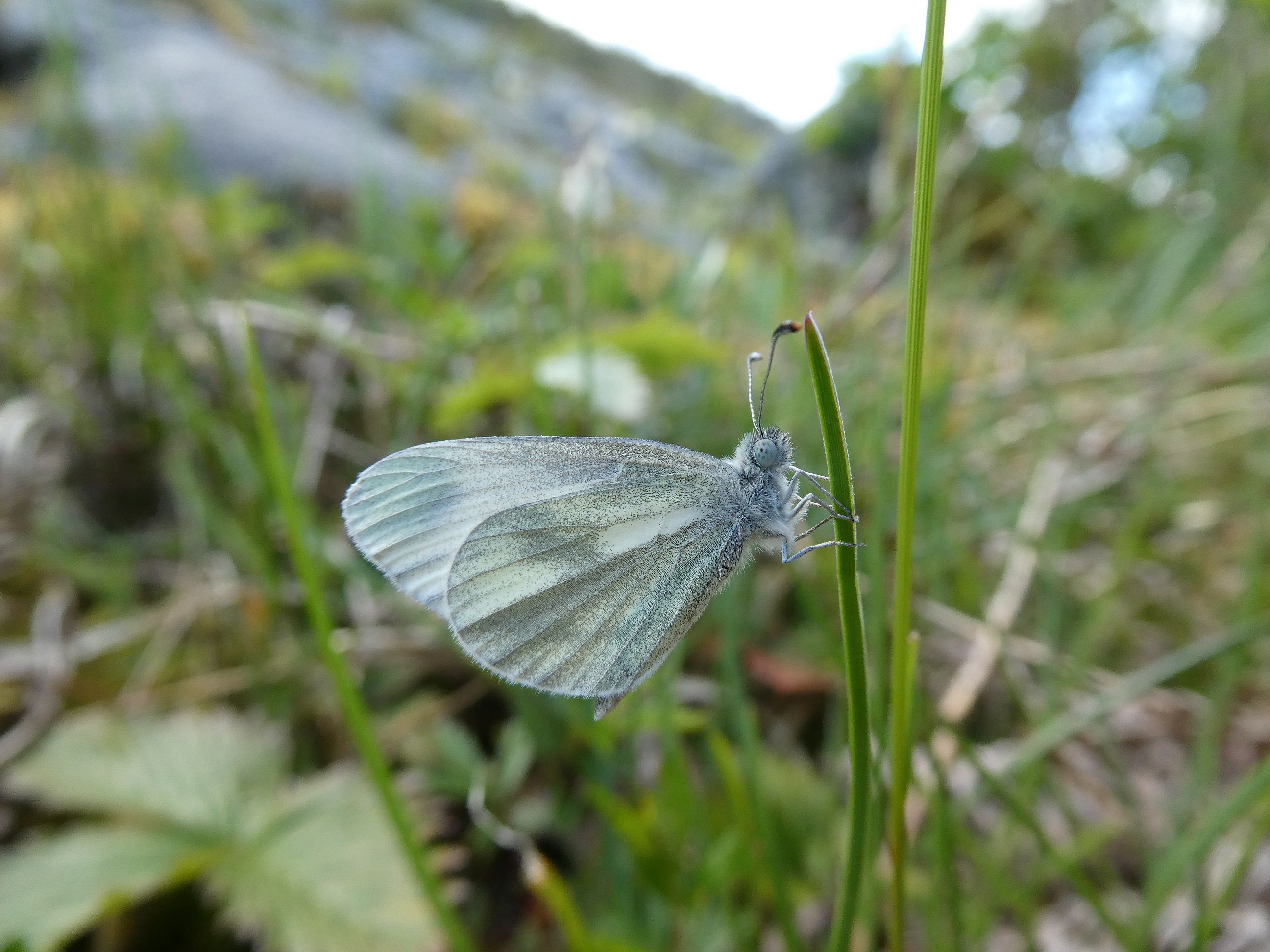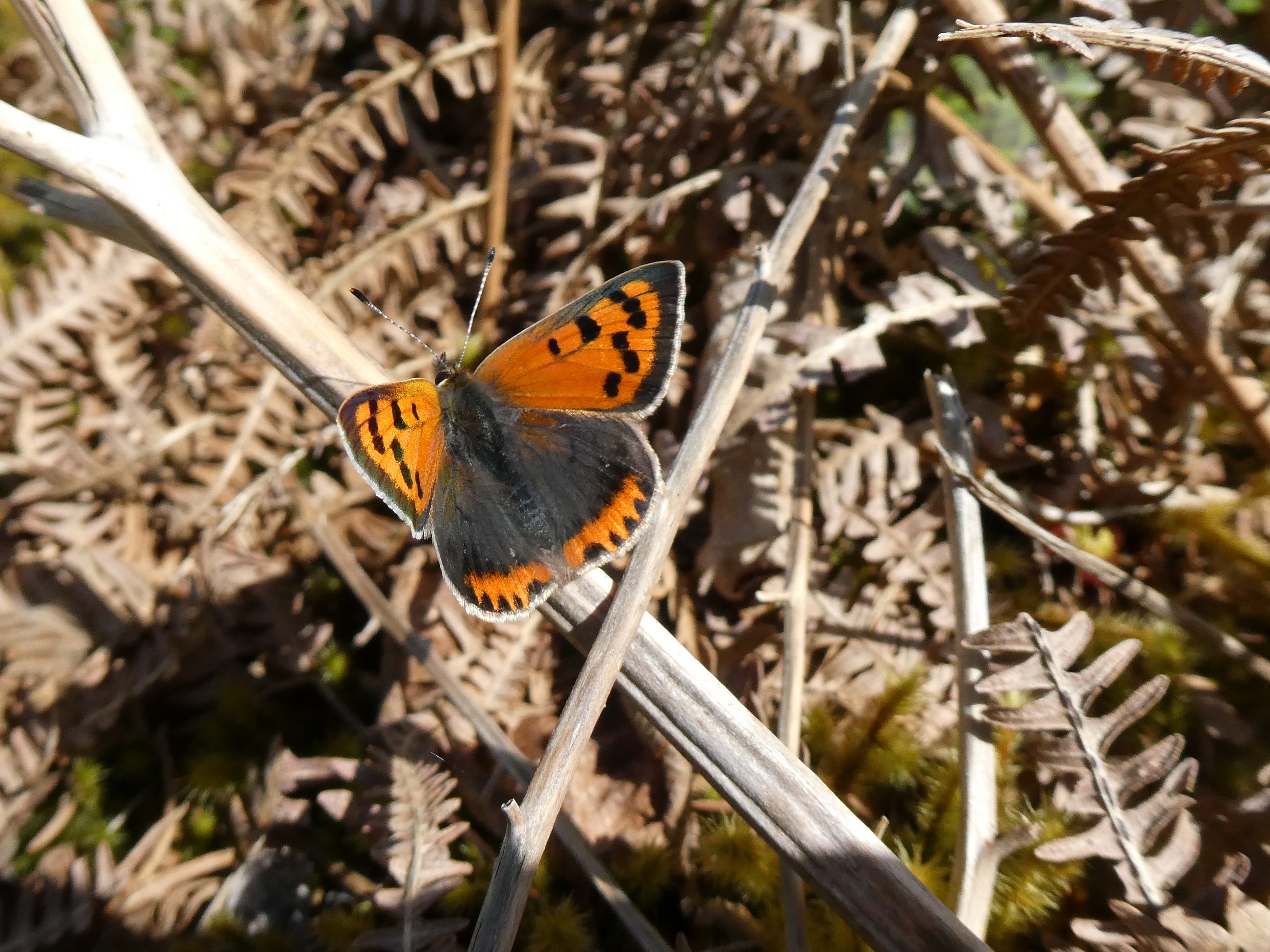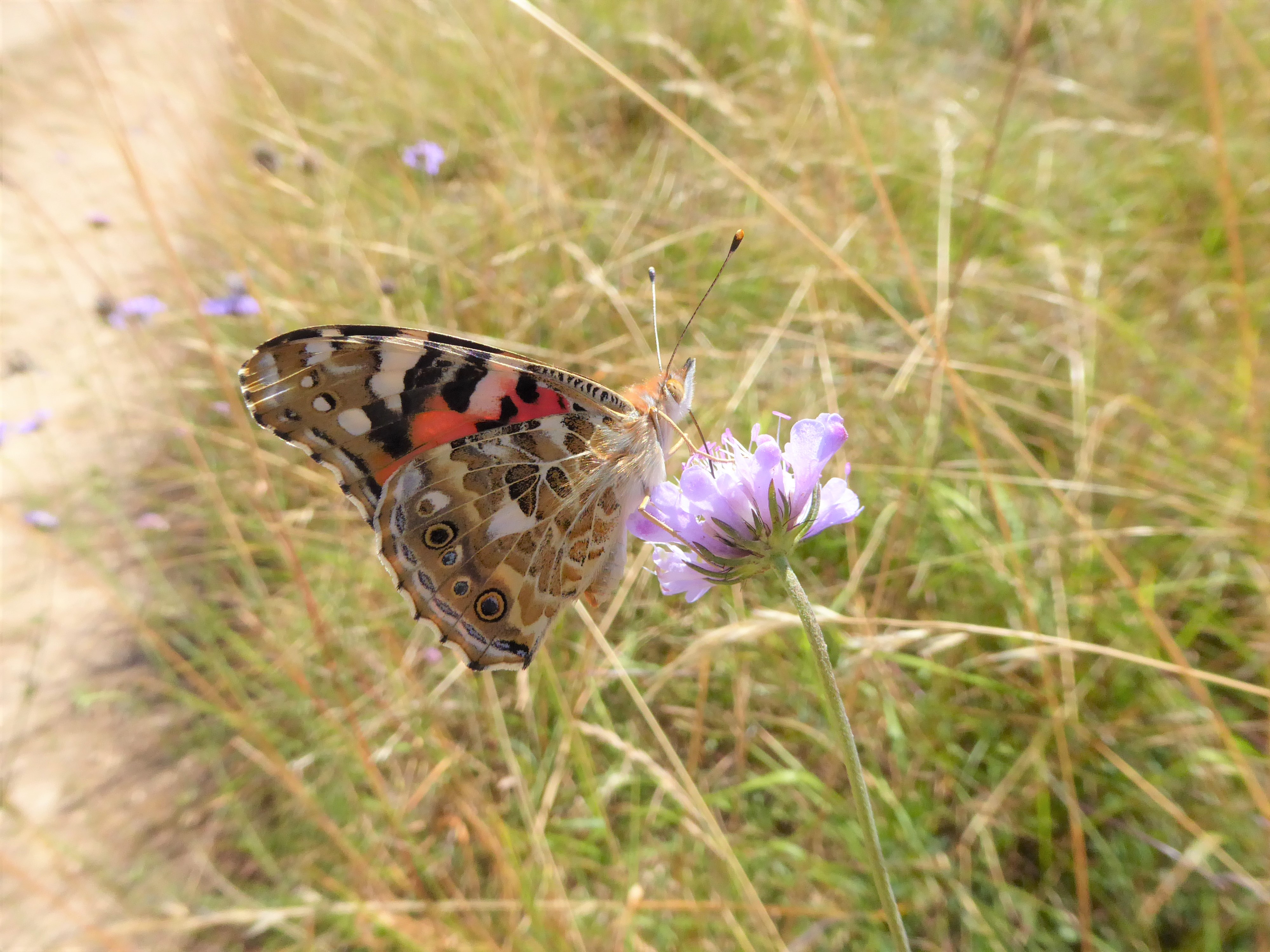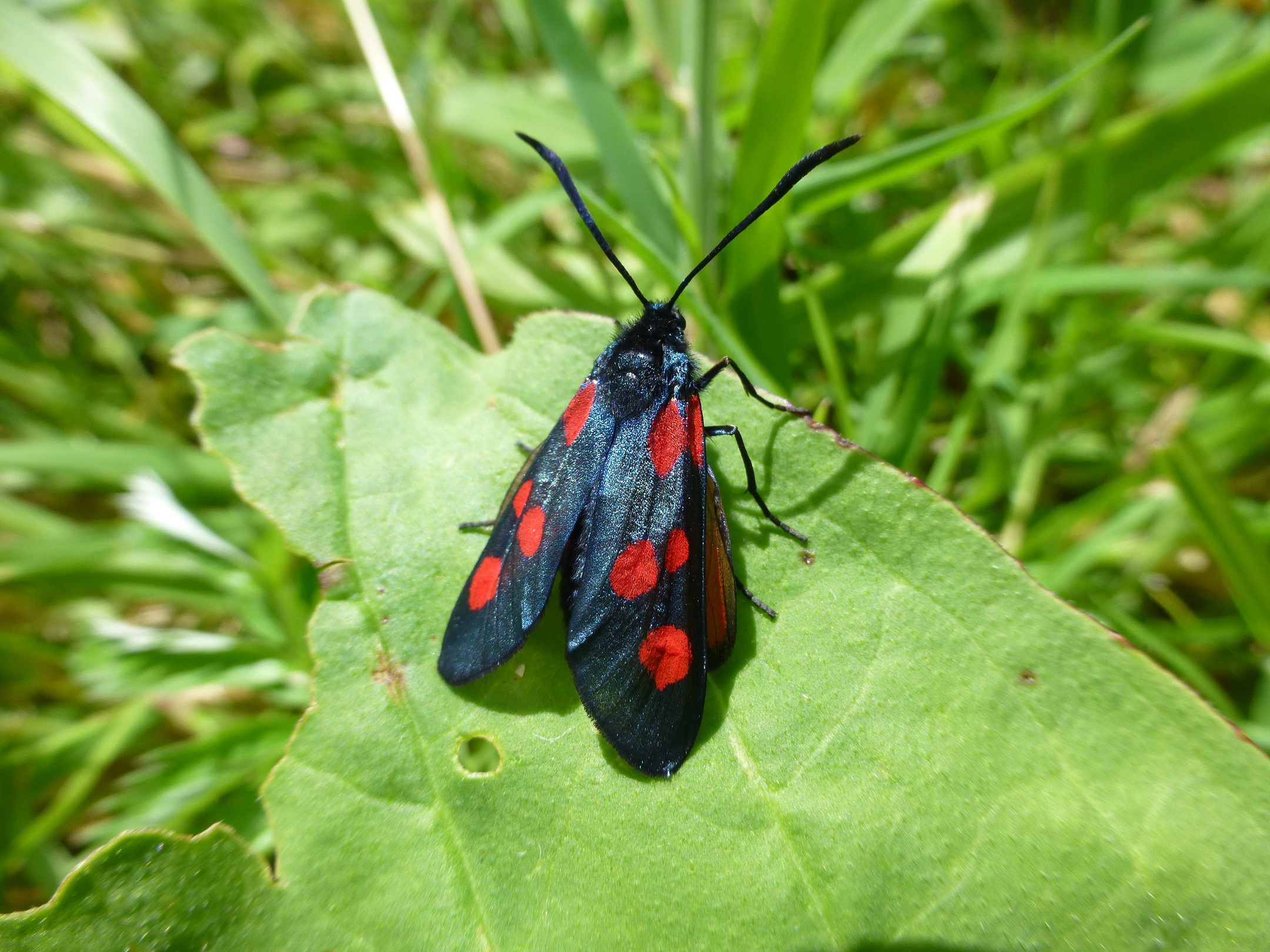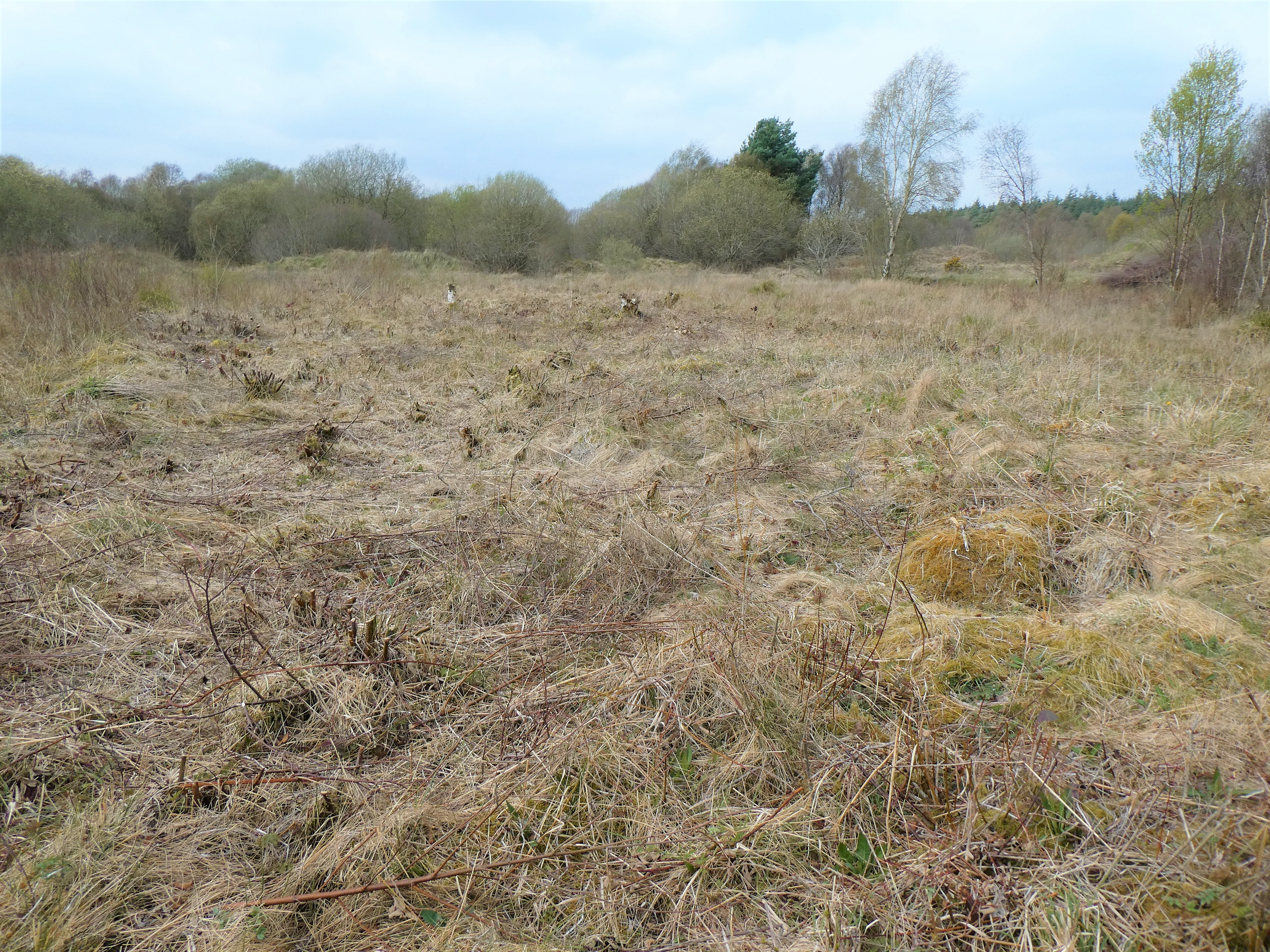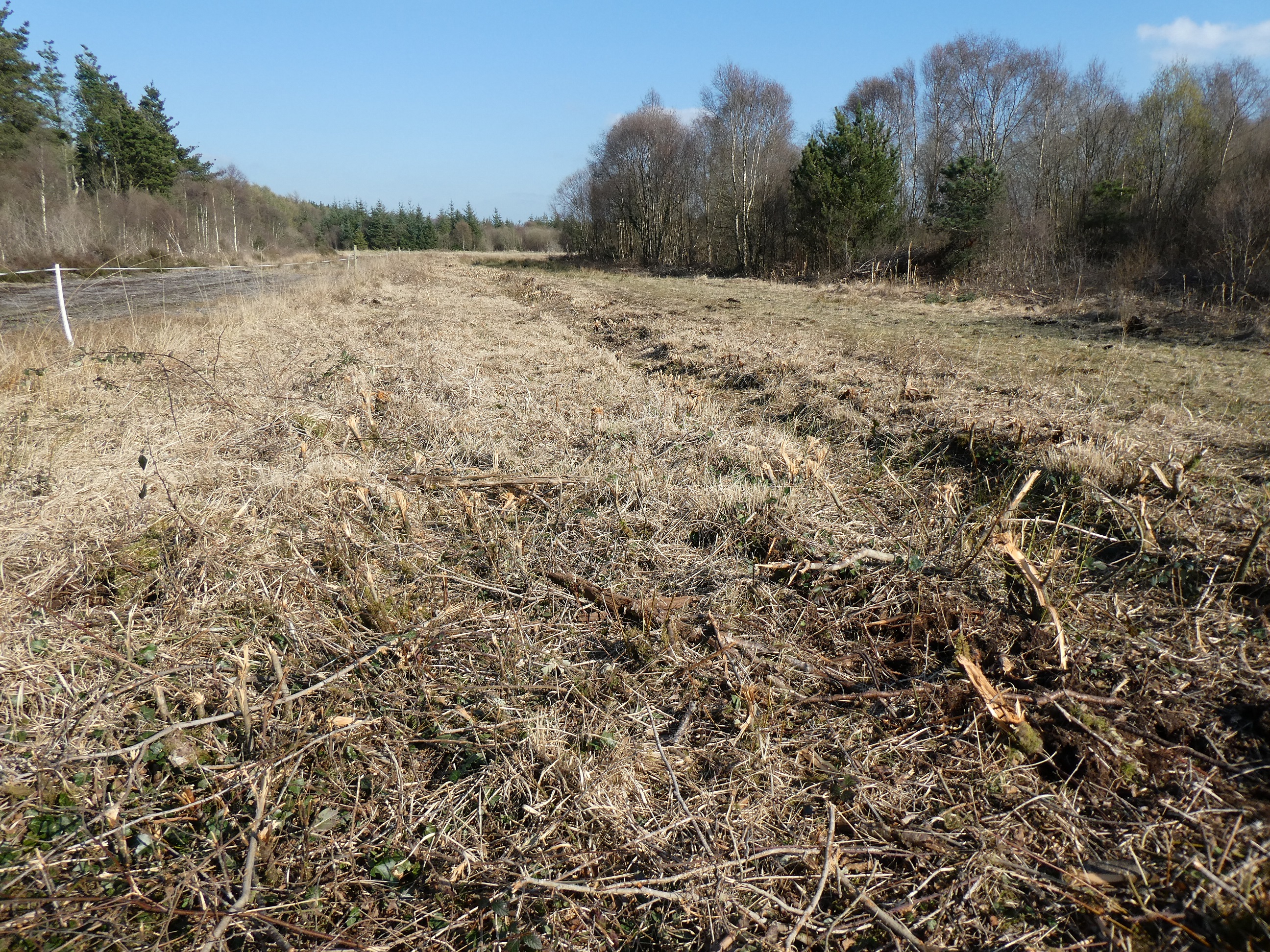Some adult butterflies enjoy what is for insects a long life. Peacock, Comma (over-wintering generation), Small Tortoiseshell (over-wintering generation) and Brimstone live long adult lives. Many other butterflies live around a month.
Some butterflies do not have this longevity. They must grab every moment of warmth to feed, mate and lay eggs. One short-lived butterfly is the Marsh Fritillary butterfly, a highly localised species. It has, for example, just one known breeding site in County Dublin. I spent Sunday afternoon on June 9th observing the colony watching it avail of the sunny conditions to breed. In the next day or so, many of the butterflies you see below will be dead.
The first priority of the male is to warm up in the morning sun. Both sexes bask with wings fully extended, usually on dry grass. It takes a while for the butterfly to absorb the heat it needs making it fairly easy to approach. When warm enough the male embarks on his search for an unmated female, quartering low over the turf. These searches are punctuated by pit-stops for refuelling at buttercups, tormentil, orchids or any flower available. Males frequently clash, and a posse of four or more chasing each other is a common sight on well-populated areas. Sometimes the male will adopt a sit and watch strategy, perching on a taller piece of vegetation until a butterfly appears. He then dashes out to check who it is. It could be a female.
The newly-emerged female Marsh Fritillary frequently sits on the surface close to where she hatched and wait to be discovered by a male. Only rarely will a virgin female fly, and then only when conditions are very warm. The reason for this lack of activity is her weight. A newly hatched female is packed with hundreds of developed eggs, weighing her down. As a short-lived species, it is vital that the eggs are laid as quickly as possible. But for that to happen she needs to mate.
When found, she makes no attempt, like the female Peacock or Small Tortoiseshell at playing “hard to get”. The females of these two species put males through their paces, flying at bursts of speed to see if he can keep up. They even try to shake her suitor off by hiding and by flying directly into the territory of other males who attack him or join the chase! Nothing like a choice of mates and healthy competition for these females!
Our female Marsh Fritillary has no time for games. She succumbs immediately. After being joined for perhaps 45 minutes, mating is complete. However, to make sure she remains mated only by him, the male seals her to prevent a future mating.
Heavily weighed down, she flutters short distances to seek a good place for her eggs. In cooler weather, she will crawl over the vegetation to search for an egg-site. Finally, she finds a suitable Devil’s-bit Scabious leaf, usually surrounded by well-developed tufted grasses that contain dry leaf litter. The foodplant will be unshaded and often south-facing. Gripping the edge of the leaf, she curls her abdomen to the underside of the leaf and lays her eggs on one side of the leaf, left or right of the mid-rib. It takes her the best part of an hour to glue her eggs on the leaf and onto eggs she laid earlier.
When done, her body looks like a flabby bag. But she is much lighter having laid, typically, 200-300 eggs. She can now fly properly, is much more agile, She visits flowers, repels male attention and basks. If the weather is hot, she may leave her colony to seek new breeding territory. If she is lucky, she will live long enough to develop more eggs, which are fertilised by the sperm she obtained when she mated. Her second or even third egg batch will be smaller than her first.
As for the male, he will continue to look for newly emerged females. He has many hazards-dragonflies, birds, spiders and bad weather account for those unaccounted for by old age.
The Marsh Fritillary lives its short life on exposed grasslands of various types and is therefore vulnerable to bad weather during its flight period in May and June. But every year, enough of them manage to seize that one good weather day to lay down the next generation. As long as we protect its habitats, this lovely butterfly will continue its battle with its short adult life-span, fierce Irish weather and the range of predators that teem on its species-rich homes.

